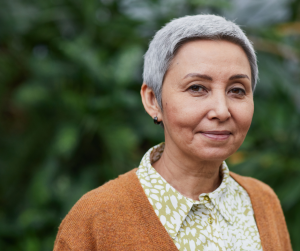
Your bones are not as inert and fixed as you may think. Bone is actually a living tissue that responds to stress. As we age, sometimes our bone cannot regenerate as fast as it needs to, resulting in osteoporosis: a disease marked by weak, brittle bones that are very prone to fracture. Osteoporotic fractures affect one-third of women and one-fifth of men over the age of fifty. The hip, wrist, and spine are all especially susceptible to Osteoporotic fracture. Besides fractures, osteoporosis can cause height loss and even changes to the curvature of the spine. Osteoporosis is an extremely serious disease, especially for older individuals. However, osteoporosis can occur at any age, so everyone, regardless of their age, should be on the lookout for the disease.
Osteoporosis in Women
Men and women experience osteoporosis at very different frequencies and levels of severity. Women are much more likely to suffer from osteoporotic fractures, with 75% of all osteoporotic hip fractures occurring in women. Bone density begins to naturally decline around the age of 30, and women experience a much quicker decline than men because we have a reduction of estrogen, especially after menopause. After menopause, women lose 2% of their bone mass every year! What makes the situation worse is the fact that women already have lower BMD (Bone mineral Density) to start with than men. Because of these factors women older than 45 spend more days in the hospital from osteoporosis than breast cancer, diabetes, and heart attacks. Many of these women are not identified as having osteoporosis even though they are in the hospital with an osteoporotic fracture, leaving many of these fractures untreated. Consequently, there is an 86% chance of sustaining a second osteoporotic fracture in these patients.
Osteoporosis in Men
Despite the fact that men experience less osteoporotic fractures on average than women, osteoporosis is still an extremely serious matter for men. Fracture rates for women with osteoporosis are higher than men, but mortality rates tend to be higher for men. Men have a one year mortality rate of 20% after an osteoporotic hip fracture, which is higher than women. While men may suffer from osteoporosis less than women on average, it is in no way an uncommon diagnosis for men: Lifetime risks for men to experience an osteoporotic fracture is 27% higher than the risk of prostate cancer. For more facts about osteoporosis in men read this article on the matter.
Prevention
These facts and statistics paint a very concerning picture for men and women alike. Luckily, osteoporosis is preventable with the right blend of weight-bearing exercise and a calcium and vitamin D rich diet. Check out this article for more details on preventing osteoporosis! Although men and women experience the disease at varying frequencies and levels of severity, it is important for everyone to work on preventing osteoporosis. Taking an active role in your own health is a necessary part in preventing serious diseases like osteoporosis. That said, it is always a good idea to consult with a healthcare professional when dealing with your bone health.
If you or someone you love is concerned about the effects of osteoporosis, a board-certified orthopedic surgeon can help. Dr. Stacie Grossfeld is double board certified in both orthopaedic surgery and sports medicine and she has decades of experience successfully helping people throughout Louisville, Kentucky and southern Indiana. For more information or to schedule an appointment, call: 502-212-2663 today.

Recent Comments